
Complete Guide to the Char Dham Yatra Route: Everything You Need to Know
The Char Dham Yatra covers four sacred destinations in Uttarakhand: Yamunotri, Gangotri, Kedarnath, and Badrinath. This journey, nestled in the Himalayas, offers a spiritual and scenic experience. Starting from the base of Haridwar or Rishikesh, travelers typically head to Yamunotri first, where they visit the Yamunotri Temple and take a holy dip in the thermal springs. Next, the route leads to Gangotri, where the Ganges originates. The trek to Kedarnath, home to the famous Kedarnath Temple, involves a challenging but rewarding hike. Finally, Badrinath, known for the Badrinath Temple and its picturesque surroundings, concludes the pilgrimage. Understanding this route helps in better planning and enhances the overall experience.
The Char Dham Yatra is one of the most revered pilgrimages in India, encompassing four sacred sites nestled in the breathtaking Himalayas of Uttarakhand. These destinations are Yamunotri, Gangotri, Kedarnath, and Badrinath. Undertaking this journey offers a profound spiritual experience while traversing through stunning landscapes. This guide provides a comprehensive overview of the Char Dham Yatra route, helping you plan your pilgrimage effectively and ensuring a fulfilling journey.
Understanding the Char Dham Yatra
The Char Dham Yatra involves visiting four important temples, each dedicated to a different deity and offering unique spiritual significance:
- Yamunotri: The journey begins at Yamunotri, the source of the Yamuna River and the shrine dedicated to Goddess Yamuna. Located at an altitude of approximately 3,293 meters, Yamunotri is known for its thermal springs and stunning views of the surrounding mountains.
- Gangotri: The next destination is Gangotri, situated on the banks of the Bhagirathi River. This site marks the origin of the Ganges River and is dedicated to Goddess Ganga. Gangotri is located at an altitude of about 3,048 meters.
- Kedarnath: The third stop is Kedarnath, home to the Kedarnath Temple dedicated to Lord Shiva. This temple is located at a high altitude of approximately 3,583 meters, requiring a trek from Gaurikund. Kedarnath is surrounded by majestic snow-capped peaks, adding to its divine allure.
- Badrinath: The final destination is Badrinath, dedicated to Lord Vishnu. Located at an altitude of about 3,133 meters, Badrinath is known for its scenic beauty and the presence of the sacred Alaknanda River.
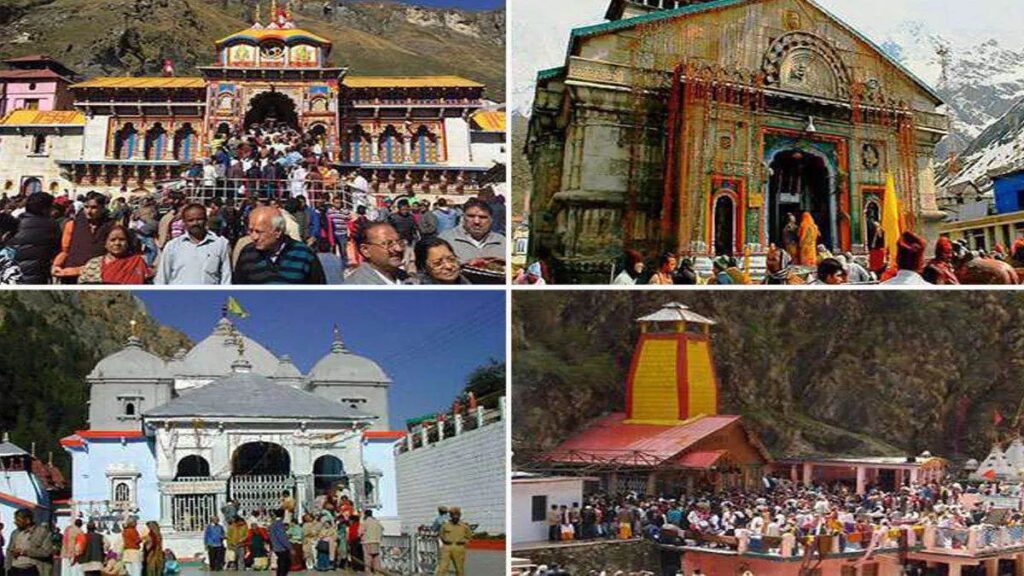
Planning Your Journey
1. Best Time to Visit
The Char Dham Yatra is best undertaken between May and June or September and October. During these months, the weather is relatively pleasant, and the roads are accessible. The monsoon season (July to August) can cause landslides and travel disruptions, while the winter months (November to April) bring heavy snow, making the routes inaccessible.
2. Route Overview
The typical route for the Char Dham Yatra is as follows:
- Haridwar/Rishikesh to Yamunotri: Start your journey from Haridwar or Rishikesh, two major pilgrimage hubs. From there, travel to Yamunotri via road. The distance is approximately 220 kilometers from Haridwar and 150 kilometers from Rishikesh.
- Yamunotri to Gangotri: After visiting Yamunotri, proceed to Gangotri. This journey covers about 230 kilometers. The route offers beautiful views of the mountains and rivers.
- Gangotri to Kedarnath: From Gangotri, travel to Gaurikund, the base for the Kedarnath trek. The distance from Gangotri to Gaurikund is around 300 kilometers. From Gaurikund, embark on the trek to Kedarnath, which is approximately 16 kilometers long.
- Kedarnath to Badrinath: After Kedarnath, head to Badrinath. The road distance from Kedarnath (via Gaurikund) to Badrinath is roughly 230 kilometers. This route is scenic and offers spectacular views of the Himalayas.
- Badrinath to Haridwar/Rishikesh: Conclude your journey by returning to Haridwar or Rishikesh. The distance from Badrinath to Haridwar is about 320 kilometers.
3. Accommodation and Transportation
Accommodation options are available at each of the four sites, ranging from budget to luxury hotels. It is advisable to book accommodations in advance, especially during the peak season.
For transportation, taxis and buses are available for traveling between the destinations. Ensure that you use reliable and well-maintained vehicles, as the roads can be challenging and unpredictable.
4. Physical Preparation
The Char Dham Yatra involves traveling through high-altitude regions and trekking to Kedarnath. Physical fitness is essential to handle the demands of the journey. Regular exercise and acclimatization before starting the trek are recommended. Consult a doctor before embarking on the pilgrimage, especially if you have health concerns.
What to Pack
Packing appropriately is crucial for a comfortable pilgrimage:
- Warm Clothing: Even during the summer months, temperatures can drop significantly. Pack thermal wear, jackets, and warm socks.
- Footwear: Comfortable and sturdy trekking shoes are essential, especially for the Kedarnath trek.
- Rain Gear: Carry raincoats and waterproof bags, as weather conditions can be unpredictable.
- Medications: Bring necessary medications, including those for altitude sickness, along with a first-aid kit.
- Travel Documents: Keep your ID, permits, and other travel documents handy.
Health and Safety Tips
- Acclimatization: Spend a day or two acclimatizing at higher altitudes to avoid altitude sickness. Avoid strenuous activities immediately upon arrival.
- Hydration: Drink plenty of water to stay hydrated, especially in high-altitude areas.
- Local Assistance: Hire local guides for trekking and navigating remote areas. They can provide valuable assistance and ensure safety.
- Emergency Contacts: Have a list of emergency contacts, including local authorities and medical facilities.

Cultural and Spiritual Aspects
The Char Dham Yatra is not just a physical journey but a spiritual experience. Each site holds significant cultural and religious importance. Respect local customs and traditions, and participate in religious ceremonies and rituals as per local practices. Engage with the local community to gain deeper insights into the spiritual significance of the pilgrimage.
How to Navigate the Char Dham Yatra Route: Tips and Recommendations
Navigating the Char Dham Yatra route requires careful planning due to its remote and rugged terrain. Start by arranging transportation from Haridwar or Rishikesh to the first destination. It’s advisable to travel during the peak season (May to June) to avoid extreme weather conditions. Ensure you have all necessary permits and check the weather forecast regularly. Each segment of the journey demands physical preparation, especially the trek to Kedarnath. Hiring local guides can enhance safety and provide valuable insights into the route. Carry essential items such as warm clothing, first-aid kits, and travel insurance. Following these tips will make your pilgrimage smoother and more enjoyable.
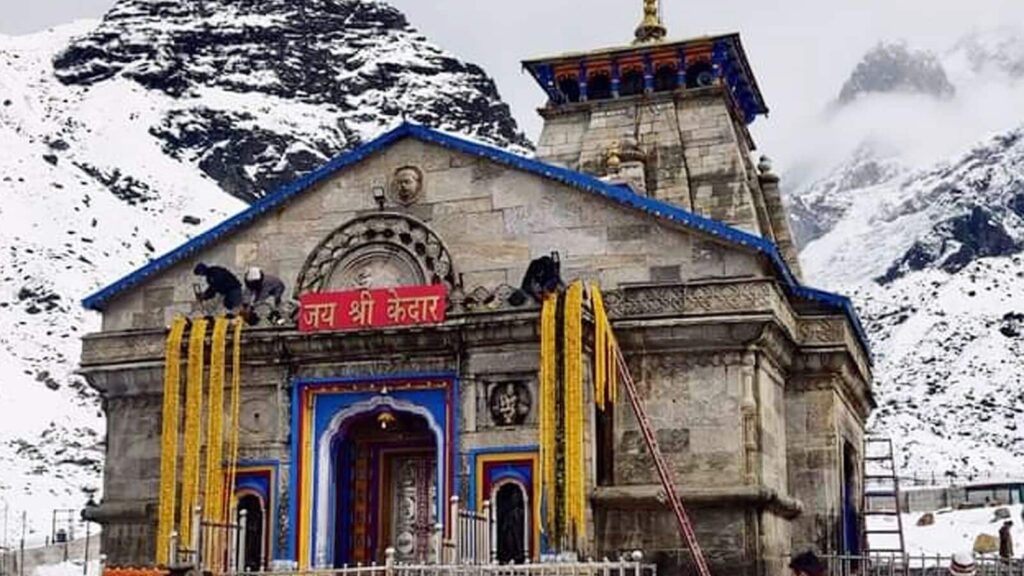
Char Dham Yatra Route: A Step-by-Step Journey Through the Sacred Sites
The Char Dham Yatra route is a meticulously planned journey through four sacred temples. Begin at Yamunotri, where you’ll visit the temple dedicated to the goddess Yamuna and explore the surrounding hot springs. Proceed to Gangotri, situated on the banks of the Bhagirathi River, where you can witness the origin of the Ganges. From Gangotri, travel to Kedarnath, accessible via a demanding trek, where the Kedarnath Temple stands as a major pilgrimage site. Conclude your journey at Badrinath, known for its scenic beauty and the revered Badrinath Temple. Each site offers unique experiences, making the route a profound spiritual adventure.
Exploring the Char Dham Yatra Route: What to Expect at Each Stop
Each stop on the Char Dham Yatra route offers distinct experiences. Yamunotri provides a serene start with its hot springs and temple dedicated to Goddess Yamuna. Gangotri, with its picturesque setting, offers views of the Bhagirathi peaks and the origin of the Ganges. The trek to Kedarnath is challenging but leads to one of the highest temples dedicated to Lord Shiva. Finally, Badrinath presents a vibrant atmosphere with its temple dedicated to Lord Vishnu and views of the surrounding snow-capped peaks. Understanding what to expect at each stop helps in better preparation and enhances the pilgrimage experience.

Essential Route Details for the Char Dham Yatra: A Traveler’s Handbook
This traveler’s handbook provides essential route details for the Char Dham Yatra. Starting from Haridwar or Rishikesh, the journey covers Yamunotri, Gangotri, Kedarnath, and Badrinath. Each segment requires careful planning, including transportation and accommodation arrangements. The route is well-connected with motorable roads and trekking paths, but conditions can vary based on the weather. It’s crucial to book accommodations in advance and prepare for high-altitude travel. This handbook includes information on the best times to visit, local customs, and essential items to carry, ensuring a smooth and spiritually fulfilling journey.
Char Dham Yatra Route Planning: How to Optimize Your Journey
Optimizing your Char Dham Yatra route involves careful planning and organization. Begin by selecting the right time to visit, avoiding the monsoon season to reduce travel disruptions. Plan your route to start from Yamunotri and move in a logical sequence to Gangotri, Kedarnath, and Badrinath. Allocate adequate time for each destination, considering travel time and acclimatization needs. Use reliable transportation services and book accommodations ahead of time to ensure availability. Incorporate flexibility in your plans to accommodate weather changes or unforeseen delays. Proper planning enhances your travel experience and ensures you can fully enjoy the spiritual journey.

Char Dham Yatra Route: A Comprehensive Overview for First-Time Pilgrims
For first-time pilgrims, understanding the Char Dham Yatra route is essential. The journey typically starts in Haridwar or Rishikesh, proceeding to Yamunotri, Gangotri, Kedarnath, and Badrinath. Each destination offers a unique experience, from the thermal springs at Yamunotri to the challenging trek to Kedarnath. The route involves traveling through hilly terrains and high altitudes, requiring physical fitness and preparation. Familiarize yourself with local customs, essential travel documents, and health precautions. This comprehensive overview helps first-time pilgrims navigate the route confidently and ensures a memorable spiritual journey.
What You Need to Know About the Char Dham Yatra Route: Key Insights
Key insights into the Char Dham Yatra route include understanding the geographical layout and seasonal conditions. The route connects four sacred sites in Uttarakhand, each offering spiritual significance and natural beauty. Weather conditions can vary significantly, impacting travel plans, so checking forecasts and being prepared for altitude sickness is crucial. Local transportation options include buses and taxis, while some segments require trekking. Knowing these insights helps in preparing for the journey and making the most of the spiritual experience at each destination.
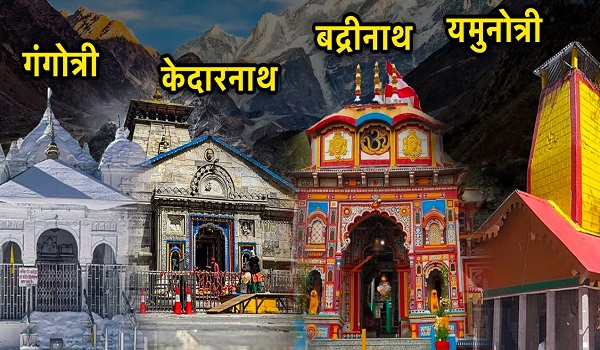
Char Dham Yatra Route: A Detailed Itinerary for a Smooth Experience
A detailed itinerary for the Char Dham Yatra route ensures a smooth experience. Start your journey in Haridwar or Rishikesh, then proceed to Yamunotri, spending the first day acclimatizing and exploring the temple. The next day, head to Gangotri, where you can visit the temple and enjoy the scenic beauty. Afterward, travel to Kedarnath, allowing time for the trek and temple visit. Conclude your journey at Badrinath, where you can immerse yourself in the spiritual ambiance. This detailed itinerary includes suggested travel times, accommodation options, and essential tips for each segment.
Char Dham Yatra Route Explained: From Haridwar to the Sacred Temples
Explaining the Char Dham Yatra route involves detailing the journey from Haridwar to the four sacred temples. The route typically starts from Haridwar, a major pilgrimage hub, and moves towards Yamunotri. From Yamunotri, travelers proceed to Gangotri, following the river Ganges. The next leg involves a trek to Kedarnath, situated at a high altitude, and finally, the journey concludes at Badrinath. Each segment of the route offers unique challenges and experiences, requiring careful preparation and an understanding of local conditions to ensure a successful pilgrimage.
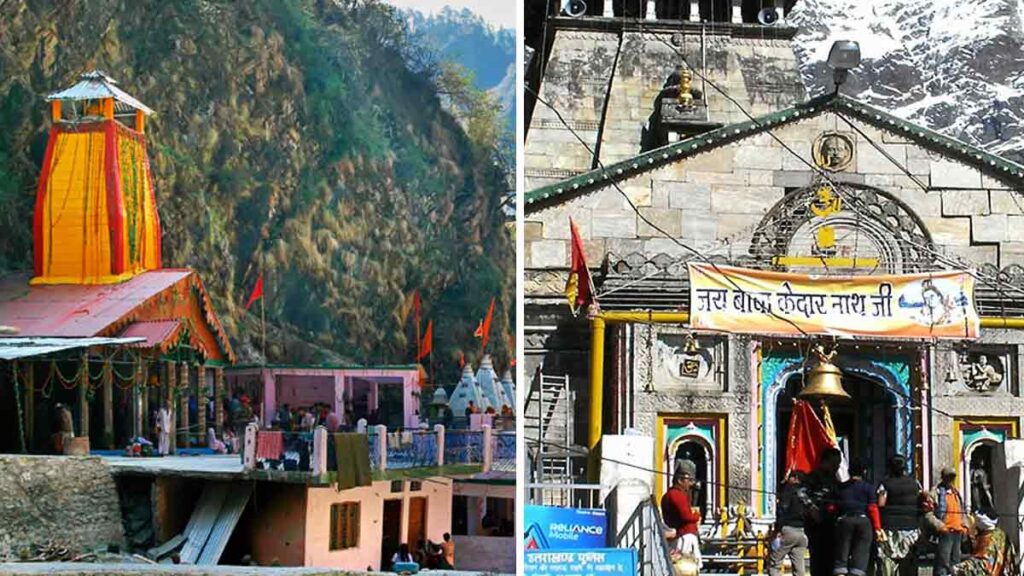
Char Dham Yatra Route Essentials: What Every Pilgrim Should Know
Every pilgrim should be aware of the Char Dham Yatra route essentials, including travel logistics, weather conditions, and physical preparation. The route involves traveling through remote and high-altitude areas, so it’s important to carry necessary supplies, including warm clothing, food, and medicines. Booking accommodations in advance and arranging reliable transportation are also crucial. Understanding the significance of each destination and the challenges of high-altitude travel helps in better preparation and enhances the pilgrimage experience. This guide provides essential information to ensure a safe and spiritually fulfilling journey.
Top Tips for Traversing the Char Dham Yatra Route: Avoid Common Pitfalls
Traversing the Char Dham Yatra route requires awareness of common pitfalls and how to avoid them. Key tips include checking weather conditions before travel, preparing for high altitudes with proper acclimatization, and avoiding peak monsoon season to prevent travel disruptions. It’s also important to book transportation and accommodations early and carry essential items such as medications and warm clothing. Hiring local guides can provide valuable assistance and enhance safety. By following these tips, pilgrims can navigate the route more effectively and enjoy a smoother journey.

Char Dham Yatra Route and Its Significance: A Spiritual Journey
The Char Dham Yatra route is not just a travel path but a spiritual journey through sacred sites. Each destination—Yamunotri, Gangotri, Kedarnath, and Badrinath—holds significant religious and cultural value. The route symbolizes a pilgrimage that connects devotees to divine entities and ancient traditions. Traveling this route involves experiencing the natural beauty of the Himalayas, participating in religious rituals, and seeking spiritual solace. Understanding the significance of each stop enriches the pilgrimage and adds depth to the journey.
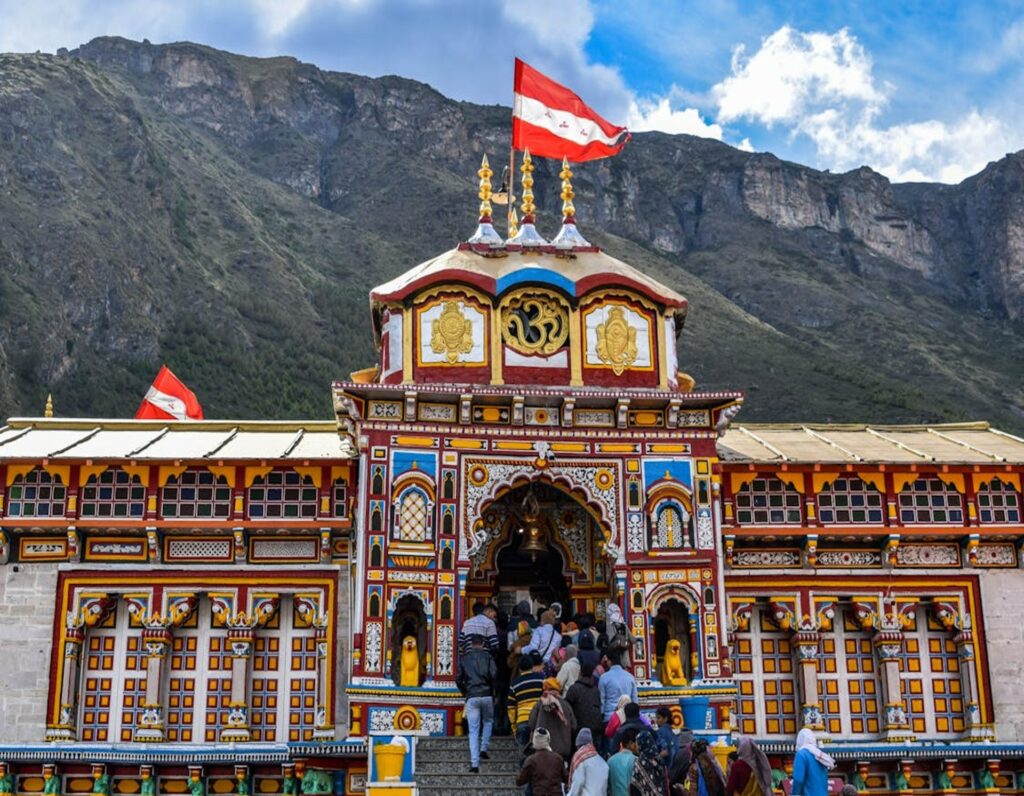
Navigating the Char Dham Yatra Route: Local Insights and Travel Advice
Local insights and travel advice are crucial for navigating the Char Dham Yatra route effectively. Engage with local guides for up-to-date information on road conditions, weather forecasts, and cultural practices. It’s also beneficial to learn about local cuisine, customs, and emergency services. Understanding these local aspects can greatly enhance your journey and ensure a more immersive and enjoyable experience. This guide provides practical advice to help pilgrims navigate the route with ease and confidence.
Char Dham Yatra Route: A Pilgrim’s Checklist for a Successful Journey
A pilgrim’s checklist for the Char Dham Yatra route includes essential items and preparations to ensure a successful journey. Start by packing necessary clothing for varying weather conditions, including warm layers and rain gear. Bring essential medications, a first-aid kit, and personal identification documents. Plan your route carefully, including transportation and accommodation bookings. Ensure you have a detailed itinerary and a list of emergency contacts. Following this checklist helps in staying organized and prepared, making the pilgrimage more enjoyable and fulfilling.
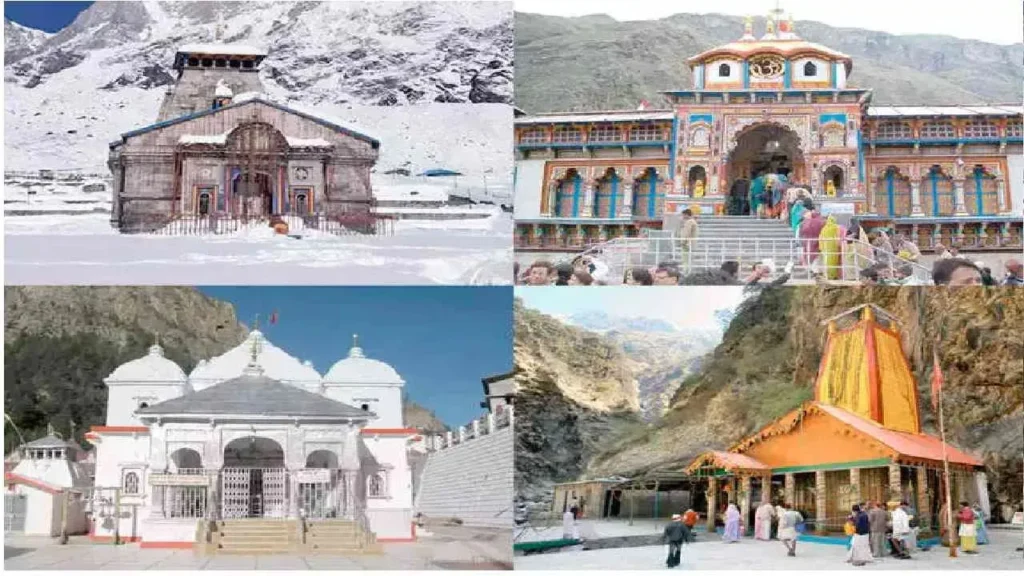
Conclusion
The Char Dham Yatra offers an extraordinary spiritual journey through the majestic landscapes of Uttarakhand. Traveling through Yamunotri, Gangotri, Kedarnath, and Badrinath, pilgrims encounter profound religious significance and breathtaking natural beauty. Each destination provides a unique experience, from the serene thermal springs of Yamunotri to the snow-capped peaks surrounding Kedarnath.
Effective planning, including choosing the right time to visit and preparing for high-altitude travel, is crucial for a smooth pilgrimage. Accommodations and transportation options are available, but booking in advance and understanding local conditions enhances the experience.
Embrace the physical and spiritual challenges of the journey with respect and preparation. Engage in local customs, stay hydrated, and respect the sacredness of each site. The Char Dham Yatra is more than a travel route—it’s a transformative pilgrimage that offers a deeper connection with one’s spirituality and nature. As you traverse this sacred path, let the divine ambiance and stunning vistas inspire and uplift you, making your journey a memorable and fulfilling experience.








Leave a Reply